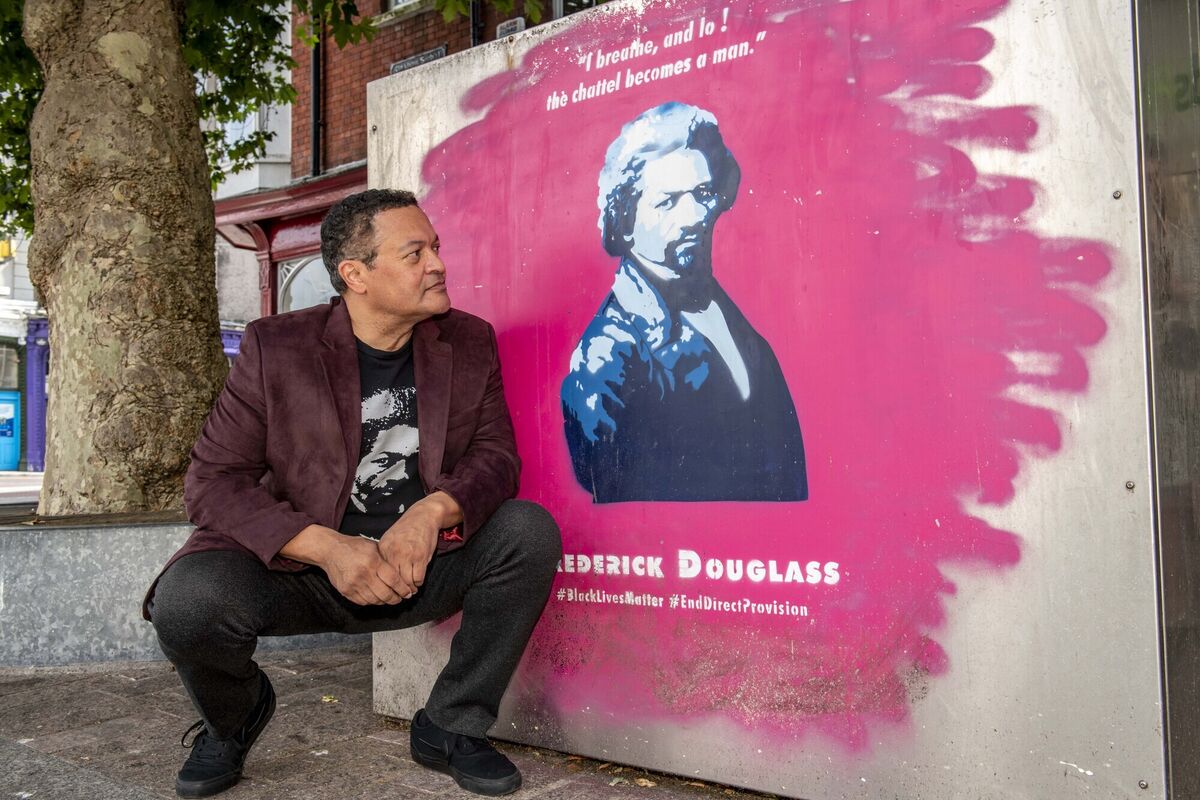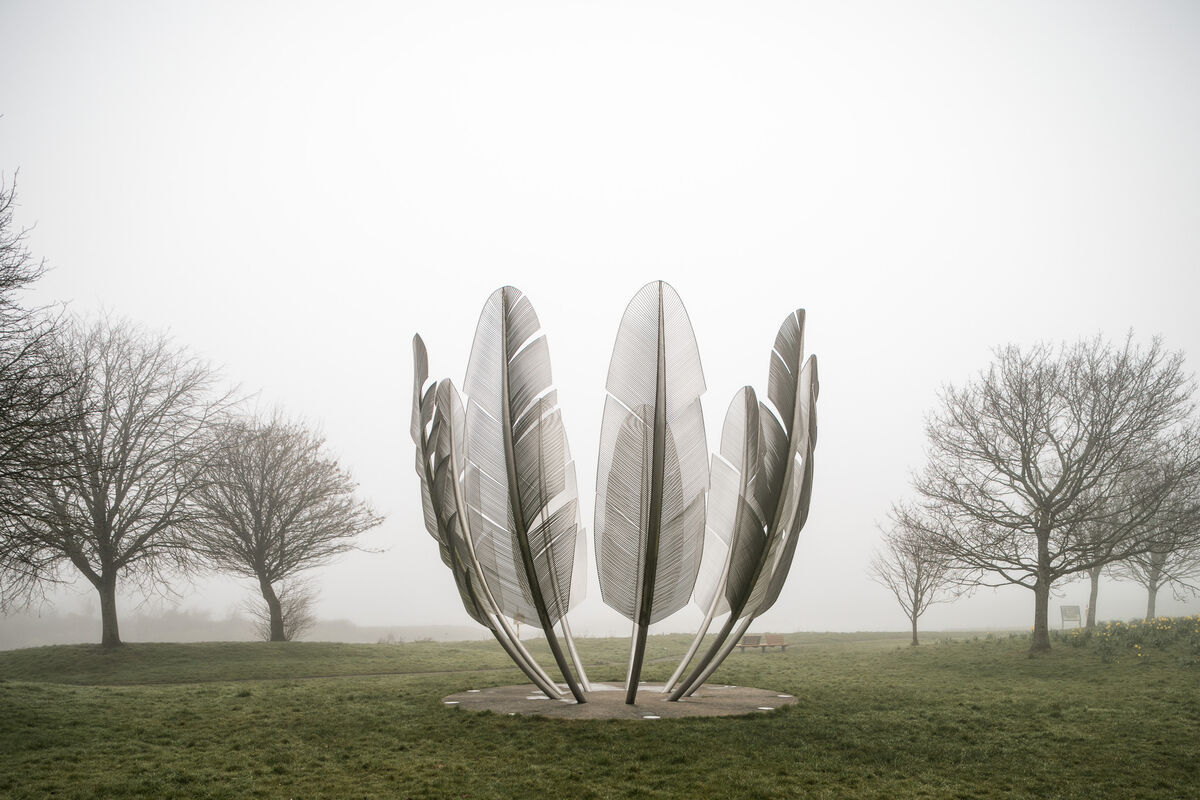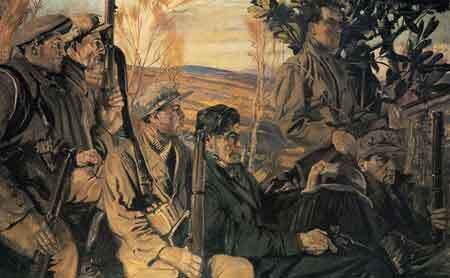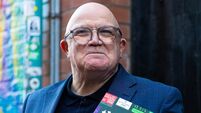Art and politics: Three Cork artworks that share political messages

Some of the artworks in Cork with political messages
The connection between art and politics is a hot topic at the moment after an image designed by Dublin artist Mála Spíosarí (Spicebag) and which is based on a 19th-century painting was tweeted by Sinn Féin housing spokesperson, Eoin Ó Broin on Saturday.
The art includes an image of a famine-era eviction, which is reworked to include private security officers and gardaí.
No words needed (credit Mála Spíosraí) pic.twitter.com/JK6NVcFNeU
— Eoin Ó Broin (@EOBroin) April 1, 2023
The original image that Mála Spíosraí used as inspiration is called The Eviction, which is attributed to Daniel Macdonald. The Eviction is currently on display in Behind the Scenes at Crawford Art Gallery until April 10.
Speaking on the Tonight Show yesterday, Mála Spíosraí defended his use of political satire in his work.
"My art is political satire. I'm entitled to my own opinions, to my own art. If you don't like them, that's your problem," he said while on a panel that included journalist Fionnan Sheahan and broadcaster George Hook.
Mála Spíosraí is selling prints of his Eviction image on his website, with 100% of profits going to a homeless charity at the end of April.
Artists using their chosen mediums to make a political statement is nothing new and we have dipped into the archives of our Cork in 50 Artworks series to highlight some well-known examples that blend art and politics.

On the Grand Parade you’ll find an electrical box painted with the image of anti-slavery campaigner Frederick Douglass. The escaped slave and abolitionist leader visited Cork in 1845 and the mural’s creator, Kevin O’Brien, says the artwork is a tribute to Douglass but also acts as a reference to more recent movements.
“I wanted to get that Cork connection, rather than just have a portrait of Douglass, and also to link it to George Floyd and the larger Black Lives Matter movement, and the Irish connection of Direct Provision,” O’Brien said.
O’Brien’s mural – blue against electric pink – features a famous Douglass quote about his time in Ireland, “I breathe, and lo! the chattel becomes a man”, and beneath it the hashtags #BlackLivesMatter and #EndDirectProvision.
O’Brien says he was struck by the resonance between Douglass’s “I breathe” and the last words of George Floyd - “I can’t breathe” - as he was killed by a police officer in Minneapolis. His mural provides a link between those tragically-different utterances.
Read more about the mural here.

A collection of delicate-looking feathers in Midleton marks a beautiful gesture during the Great Famine. Kindred Spirits was created by Alex Pentek and commemorates the donation of $170 (a huge sum for the time) by the Choctaw Nation to the Irish people during the Famine.
Pentek, who lives near Grenagh, Co Cork, says he wanted to encompass the Irish and Choctaw stories of oppression in the piece, and he did extensive research on the history of both nations ahead of making it.
“The Choctaw donation was approximately 13 years after their own crisis of oppression where they were forced by the American government from their original lands in the Mississippi region up to what is now modern-day Oklahoma. About a quarter of their population died between 1831 and 1833, known as the Trail of Tears. Then you had the Famine — a million dead of starvation, while food was being exported at gunpoint from the country,” he says.
Pentek says the story behind the art resonates to this day.
"I wanted for it to visually communicate not just the history but a bigger more broad theme that is relevant today as much ever, that we have to stand together against adversity.”
Read more about the sculpture here.

One of the more obviously political-looking pieces on this list, Men of the South by Seán Keating is an oil-on-canvas painting of the members of the North Cork Brigade during the War of Independence. It hangs in the Crawford Art Gallery and has become one of Cork’s most-loved works of art.
Art historian Eimear O’Connor, author of the biography, Seán Keating: Art, Politics and Building the Nation said Keating knew he was living through a significant moment in Ireland’s history and was painting with posterity in mind.
“Keating always wanted to paint emerging history. He wanted to be there on the spot. That is also why he documented the Shannon Scheme. He knew what he was doing, that it was going to be an iconic painting for the future. It is important to get across the historical significance of the work and what Keating is trying to do — to appeal to people living now, going in to look at that painting. He wants everyone to feel the tension of the time.”
One hundred years after its creation, Men of the South gives us an insight into the turbulent creation of a nascent state and a reality that is hard to comprehend now.
“Keating lived through the times that made Ireland now. I don’t think we can even get our heads around what it must have been like then. They were walking around during the War of Independence, the Civil War, with bullets flying past their heads,” O’Connor said.
Read more about the painting here.


